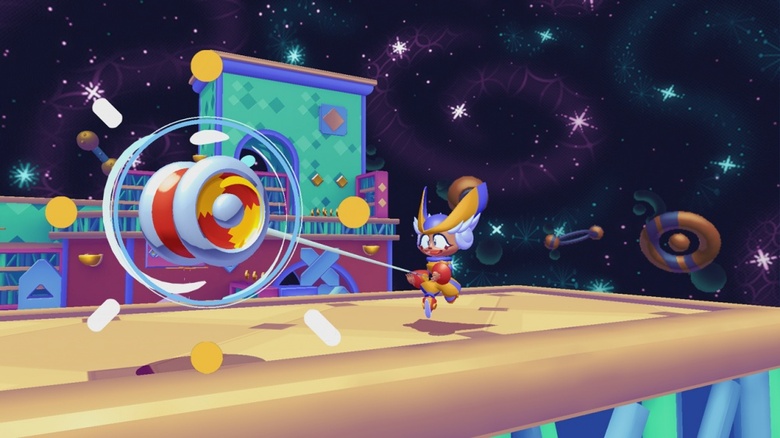Penny's Big Breakaway director on transitioning from 2D to 3D design
That's a whole extra D!
Penny’s Big Breakaway is a modern throwback to classic 3D platformers of the 90s, but its team actually had more prior experience in the 2D realm. Directors Hunter Bridges and Christian Whitehead both came to the project after working on Sonic Mania, a game fans praised for being true to its sidescrolling roots. With Penny however, they knew they wanted to take things in a new direction from the beginning.
In a new interview with Inverse, Hunter Bridges elaborates on the challenges involved with going from one gameplay style to another. According to him, this meant a pretty big shift in the way the team approached enemies and level design:
“Does my approach to making levels translate to three dimensions? For example, in 2D, I don’t like using bottomless pits. I don’t find a need for them when I can make several other interesting scenarios. But with 3D, the ‘void’ is unavoidable. The bottomless pit is the enemy in the game.”
“You look at Mario and the Goomba. The perfect enemy in 2D, but in 3D you can just walk around them.”
We’ve seen plenty of franchises make the transition from 2D to 3D over the years, some with more success than others. It sure seems like design concepts need to be adjusted in the process, as simply copying over elements from 2D to 3D is much tougher to make work. Bridges explains that this philosophy led to an emphasis on momentum and staying in the air, which can be seen throughout Penny’s Big Breakaway.
In the interview, Bridges also elaborates on the origins of the project and other behind the scenes tidbits. Click here to read it for yourself.

Comments (0)